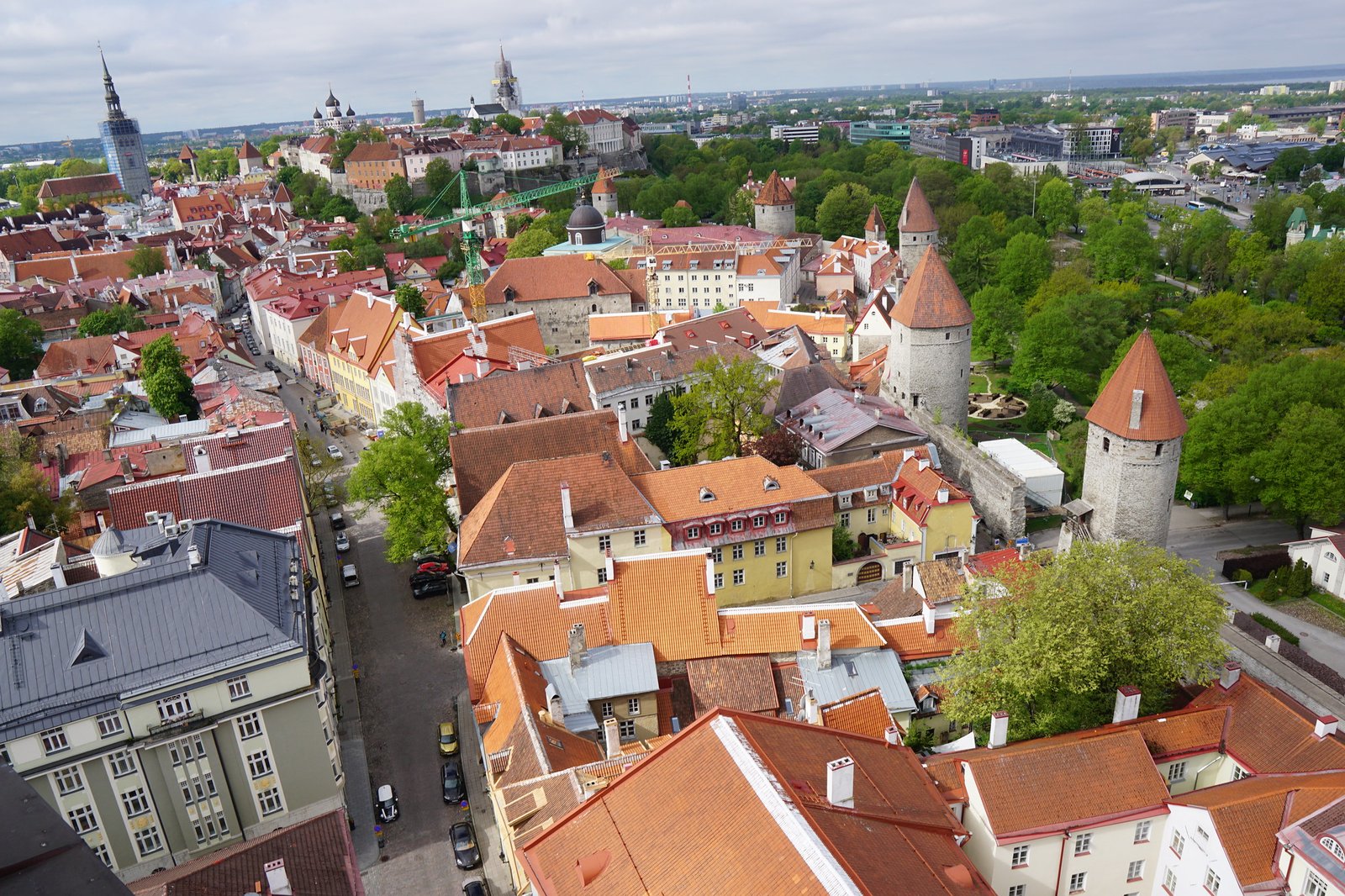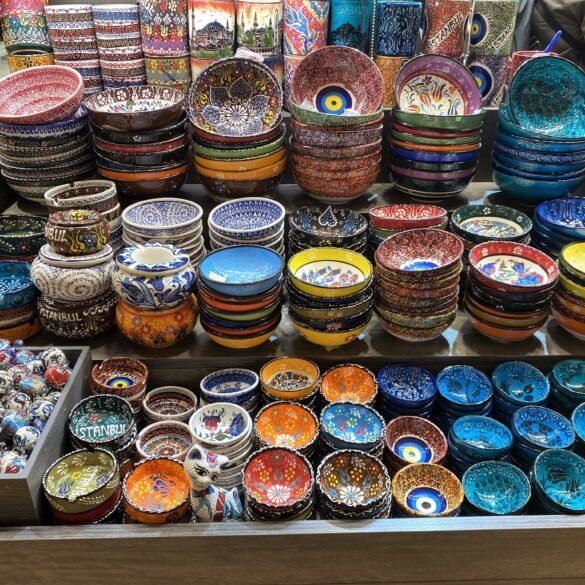When we are traveling and have questions that no guidebook or a quick Google search can answer, we always look for a local to chat to. In Latin America or Southeast Asia, it’s easy, just find a friendly vendor, chat up our Airbnb host, or find a friendly expat in a coffee shop. As long as they have a basic grasp of English or Spanish, we can always sprinkle in a few unobtrusive questions.
“Why are the wheels of parked cars often covered with cardboard?” We asked our Airbnb host in Japan who came to pick us up from the train station.
“What is everyone drinking out of those small cups full of leaves?” I asked a woman in the park, in Buenos Aires.
“What are those snacks, right next to peanuts? We see them everywhere.” Victor asked at a Mexican market.
The answers, in case you want to know are as follows: “So dogs don’t piss on them”, “Mate tea”, and “Spicy crickets”.
In Europe and America, where people are less likely to strike up a conversation with tourists on the street and we might not even meet our Airbnb host due to the popularity of the “self-check-in”, we often find ourselves going back to the same old reliable option – the taxi driver. Every country we go to, the cultural attitudes, religion, and politics might be different, but taxi drivers are always the same. It’s always a man and no matter what age he actually is, he will always act as if he is at least in his middle fifties – he has seen it all, he is fed up with most of it, and he has a lot of resolute opinions. On everything. And these are never presented as opinions, but as absolute facts that there is no use in arguing with.
“Women should not be traveling on their own. It’s not safe. Krakow is a safe city, but women on their own are not safe anywhere!” said my taxi driver, while making a sharp turn down a cobble-stone alley.
I nodded.
“The dollar bill was created by Masons. It has a representation of the devil on it. It’s a conspiracy going back hundreds of years!” this was a taxi driver in Paris, and this went on for the full duration of the ride.
We nodded.
“There should only be two countries in South America,” the taxi driver in Argentina grumbled, “Argentina and Brazil. The rest should just be divided between us. They are not even real countries anyway.”
We didn’t nod, but it didn’t really matter.
So, when we visited Tallinn in 2022, as the war in Ukraine was raging on, we had a few complicated questions, mostly having to do with the prevalence of the Russian population in Estonia, a NATO country, which backed Ukraine from the beginning of the conflict. We decided not to ask any direct political questions, but the gist of what we wanted to know was: how did Estonians and Russians view each other now, how well did they understand each other, and most importantly, did they even speak the same language?

The first taxi driver was taking us to the favorite pastime of every Estonian and Russian: a sauna, or “banya” in Russian. He was in his early twenties, blond, thin, and according to his name in the ride-share app, unmistakably Russian.
“Excuse me,” I said in Russian, “Can we ask you a few questions?”
He immediately perked up and gave me a wide smile in the rear-view mirror.
“Oh, you speak Russian! Wonderful! Yes, what do you want to know?”
I explained that we were interested in the intricacies of the daily life of ethnic Russians in Estonia. He shrugged as if this topic couldn’t possibly be interesting and went on to tell us that he was born and raised in Narva, a dominantly Russian-speaking city in Estonia, but had to come to Tallinn for work.
“Do you speak Estonian?” we asked.
“I don’t. Maybe a few words. I went to a Russian school in Narva, but then when I graduated, I couldn’t go to a college or university as they are all in Estonian. I am not good at learning new languages. The only jobs open to me are a taxi driver or construction worker.”
“Why didn’t your parents send you to an Estonian school?”
“Well, they don’t speak any Estonian, so why would they want me to?” he said a little bitterly, “When I have kids they will absolutely go to an Estonian school. They will need to integrate into this society and have better opportunities, unlike me.”
We asked how much not knowing Estonian affects his daily life.
“It used to be easier years ago. All Estonians knew Russian, and it was possible to communicate. Now, they don’t even study Russian in school! It’s all English or German or Spanish. And older people who do know Russian, refuse to speak it. They pretend not to know it!”
We sympathized with him, his home country rapidly changing direction to where it doesn’t feel like home anymore, where he is a foreigner in a place of his own birth, at no fault of his own.

The second taxi driver, taking us from Estonian Open-Air Museum back to Tallinn, was a large, round-faced man in his early thirties. He spoke decent English with a heavy Estonian accent. He also enthusiastically agreed to have a little chat.
“Russians!” I could see him roll his eyes in the rear-view mirror, “They are too lazy to learn our language, they just sit around on the government programs or work as waitresses, construction workers, or prostitutes!”
We said nothing about Russian taxi drivers so as not to provoke him.
“They listen to the Russian TV and believe all the propaganda, but none of them want to live in Russia!” he smirked, “Every time a Russian-speaking school gets closed, they protest! They want their children to study in their language and then what? What is their future? They don’t want to live in Russia, but they don’t want to adapt to life here! They think we should adapt to them! Well, this is our country, and we are no longer under their occupation!”
We sympathized with him, his home country having fought so hard for their independence and for the last thirty years still having to deal with the fallout from Russian occupation, namely a quarter of the entire population refusing to integrate into Estonian culture and language, as well as the constant threat of expansionist Russian politics.
The third taxi driver, taking us to the airport on the last day of our trip, was neither Russian nor Estonian.
“I am from India!” he said, thrilled that we spoke English, “Udaipur, a beautiful city!”
We haven’t seen a single Indian person in Estonia until now, so this was quite a surprise. We assured him that we have been to Udaipur, and it was quite a beautiful city. We asked him how he came to be in Tallinn.
“I came here to study at a university! I love it here! The people are so nice, so friendly, I decided to stay a few more years!”
We asked if he spoke any Estonian or Russian.
“No! Only English, but it’s ok! Everyone here speaks English, and everyone understands me. I have lots of friends! People are so friendly!”
“What do you think about the Russian population in Estonia?” We asked, “Have you noticed how Russians and Estonians treat each other?”
The taxi driver paused in thought, “Honestly… I don’t know the difference between Estonians and Russians, they all look the same to me and their languages sound the same. I wouldn’t know who they are unless they tell me! Both Russians and Estonians treat me well!”
After two previous taxi driver conversations, this was a joy to hear. We watched the medieval towers, beautiful stone buildings, and confusing politics of Tallinn disappear in the rear-view mirror as the taxi drove on. Hopefully one day everyone in Estonia will be as nice and friendly to each other as they are to this one Indian taxi driver.

